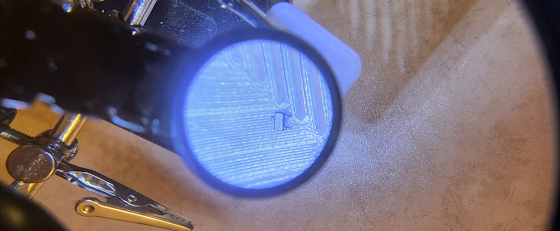/usr/share/hplip/firmware.py -n -p HP_LaserJet_1020
open chrome as a normal user (in our case luser23)
go to chrome://devices/
click add printer. follow instructions.
create the following init script and make sure is executed at startup
cat /etc/init.d/cloudprint
#!/bin/sh
#
# Start / Stop cloudprint daemon
#
# description: Start / Stop cloudprint daemon
# chkconfig: 345 99 9
#
### BEGIN INIT INFO
# Provides: cloudprint
# Default-Start: 3 4 5
# Short-Description: Start / Stop cloudprint daemon
# Description: Start / Stop cloudprint daemon
### END INIT INFO
# Source function library.
. /etc/rc.d/init.d/functions
# config file
CONF=/etc/cloudprint.conf
[ -r $CONF ] && . $CONF
[ -r $CONF ] || user=luser23
[ -r $CONF ] || options="/opt/google/chrome/chrome --type=service --enable-cloud-print-proxy --noservice-autorun --noerrdialogs --disk-cache-size=1 --media-cache-size=1 --disk-cache-dir=/tmp/chrome.$$ &"
# See how we were called.
case "$1" in
start)
gprintf "Starting cloudprint: "
/usr/bin/su -l $user -c "$options" && success || failure
echo
;;
stop)
gprintf "Shutting down cloudprint:"
killproc chrome && success || failure
echo
;;
status)
status chrome
;;
restart)
$0 stop
$0 start
;;
*)
gprintf "Usage: %s\n" "$0 {start|stop|restart|status}"
exit 1
esac
exit 0
cat /etc/cloudprint.conf
user=luser23
options="/opt/google/chrome/chrome --type=service --enable-cloud-print-proxy --no-service-autorun --noerrdialogs --disk-cache-size=1 --media-cache-size=1 --disk-cache-dir=/tmp/chrome.$$ &"
or just add in /etc/rc.d/rc.local the following line:
su -l luser23 -c '/opt/google/chrome/chrome --type=service --enable-cloud-print-proxy --no-service-autorun --noerrdialogs --disk-cache-size=1 --media-cache-size=1 --disk-cache-dir=/tmp/chrome.$$ '

No comments:
Post a Comment